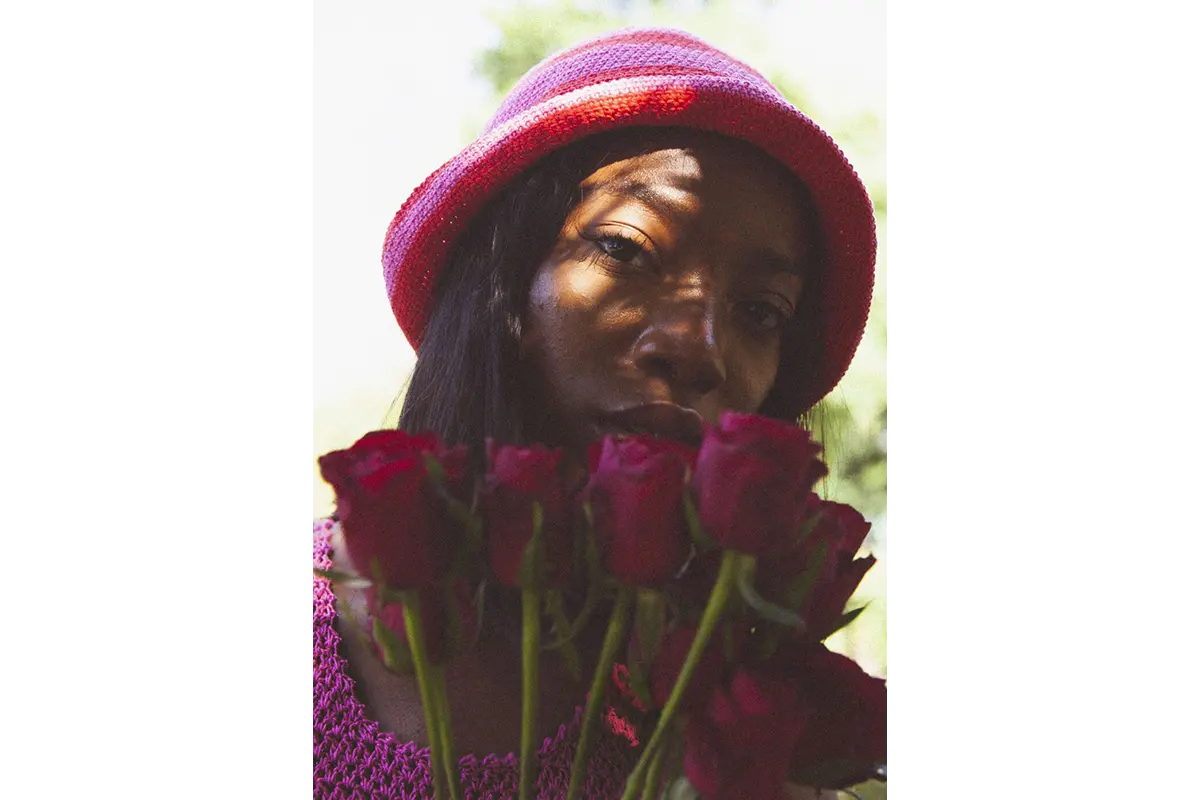In conversation with trend forecasters Anna Maroncelli and Harleen Sabharwal on exploring the antidote to consumerism
Pandemic induced resurgence in DIY
Harry Styles’ crochet cardigan by designer JW Anderson, not only sparked off a viral TikTok crocheting challenge, but also encouraged a renewed appreciation and application of the hand-made. Home-made, handicraft-inspired, DIY (do-it-yourself) fashion like tie-dye prints, crochet dresses and upcycled denim compete for screen time on current social media feeds and browser advertisements.
This sartorial affair with DIY seems to be the aftermath of boredom during extended periods of quarantine. Numerous studies on cognitive brain function and mental health indicate that handicraft and DIY are natural coping mechanisms to stress and difficult emotions.
Italian trend forecaster Anna Maroncelli believes that creativity became a form of refuge, shifting from a pastime to a meditative action during the pandemic. Through experience, people realised the depth of labor and artistry involved in such creations and the under-credited legacies of the craftsmen.
This resurgent DIY culture could be a key ingredient in the antidote to consumerism as it continues to alter the mental fabric of the masses by increasing criticism for fast fashion and accelerating towards sustainable action.
The ‘consciousness’ of DIY and the industry’s response to it
The sustainability lexicon is perceived as ambiguous, with jargon like clean and eco-conscious clouding the irl of it all. Current upcycling and tie-dye trends are means of celebrating slow fashion, aiming to lend versatility and longevity to garments.
Widespread tutorials of these techniques proved to be an active means of combating fast fashion and doom scrolling during the lockdown. They also decreed a new genre of influencers sharing make-at-home clothing tips, similar in concept to e-commerce services Paper Theory and Helen’s Closet, both of which sell sewing patterns for a sustainable wardrobe.
Moving from education to capitalisation, many social media-native businesses cropped up across the globe to sell ‘stay-at-home-made’ apparel and accessories. Polite Society and CAVA are two such post-contemporary Indian brands born in the midst of the pandemic.
The luxury segment joined the DIY bandwagon with JW Anderson releasing a downloadable pattern and YouTube tutorial for his viral patchwork cardigan, followed by LA-based designer, Reese Cooper, who launched a series of instructional kits for his signature workwear coat, shirt-dyeing and patchwork embroidery.
Lampoon introducing Cro-Che
The most popular pandemic-inspired trend: crochet, is also a top candidate for zero-waste fashion, according to Tacita Brown, founder of independent London-based label Cro-Che. Launched in the midst of intermittent lockdowns, Cro-Che is built with ethics and sustainability at its heart.
Brown admits that she doesn’t pretend to own a label with a hundred per cent clean carbon footstep, but rather focuses on the people who make and the process of creating, before design. She believes that crochet is planet positive. «It is an ancient craft using a ball of yarn and one stick. You can make something beautiful out of nothing, so there’s zero waste».
Brown is particular that everything must have a hand-made element to it. This element of hand-making comes from the small villages in rural regions of developing countries like Indonesia, where artisans carry forward the craft passed on between generations. As a brand born during quarantine, work from home was mandatory; however Brown aims to empower these women artisans by completely eliminating the need to work from factories even in the future.
«Every piece is created in the safety of their own homes as opposed to garment factories in big cities. They do not have to leave their families for work, and are able to be their own bosses, in charge of their own time and workload. The main thing for me is to empower these ladies in developing countries and in the future enhance the lives of entire communities there».
The resilience of crochet as an unseasonal trend beyond summer plays no role in the sustenance of the brand as Brown reveals an upcoming hand-knit winter collection «A lot of people who are trend focused are becoming aware of the importance of sustainability in a brand and the idea of artisan-made and local is only going to grow».
Consumer activists, back to the future?
Charged with the epiphanies born of DIY and stay-at-home-made, people have taken on roles of activists, using social media to demand accountability from brands regarding environmental and social causes.
There has also been an outgrowth of ethical entrepreneurs launching start-ups selling artisan-made fashion. Current attitudes mirror a time in world history when hand-made was used as a weapon to bring about social reform.
The Arts and Crafts movement (ACM) of the late nineteenth and early twentieth century set the wheels of anti-consumerism in motion, by rejecting the industrial revolution and favouring a revival of traditional techniques and handicraft work. Early influencers of the ACM such as art critic John Ruskin and textile designer William Morris were dedicated to dissolving injustices within fashion manufacturing supply chains and asserting the independence of artisans.
Ruskin believed that industrialization alienated labor and created a dehumanizing distance between the designer and manufacturer, as pointed out in New York Metropolitan Museum of Art’s, Heilbrunn Timeline of Art History, 2000.
Post-pandemic consumer activism. Social media petition #PayUp
Parallels can be drawn to post-pandemic consumer activism, case in point: social media petition #PayUp by non-profit organisation Remake, resulting in justice for unpaid garment workers in Bangladesh, Cambodia and Vietnam, who were among the first to pay the price for society’s temporary break-up with the industry.
The connection clicks with Maroncelli: «There are surely some connections between the times as they both are a reaction to strong industrialization; however the current mindset is characterized by a more democratic vision and participation».
In the mid-eighteenth century, William Morris researched and mastered pre-factory production, focusing on natural and organic dyes to replace chemicals contributing to pollution and working hands-on with craftsmen on embroidery, textiles and tapestry.
The Victoria and Albert Museum, London states that preserving and emphasizing the natural qualities of the materials used to make objects was one of the principles of the Arts and Crafts movement. While eco-conscious has become a buzzword in the recent past, it may have taken a pandemic to breed a new people that is willing to walk the talk when it comes to sustainability.
A research by IBM in association with NRF (National Retail Federation) reported that the pandemic accelerated consumer buying shifts towards purpose-driven sustainable action. It affirmed that fifty seven per cent of consumers surveyed were willing to change their purchasing habits to help reduce negative environmental impact and seventy one percent of them required traceability from brands.
Writer and slow fashion advocate, Aja Barber recently shared with her social community that she is recovering from over-consumption, prompted by an addiction to fast fashion, further clarifying that it’s not possible to buy one’s way out of systems of consumption that harm the planet.
The catalysts: money and emotional well-being
«We are at war till 2024. The Great Depression, World War I and II were each world events that caused lifestyle changes and it’s the same now», says Indian trend researcher Harleen Sabharwal.
Rather than giving sole credit to DIY and handicraft, she attributes these changes to unemployment and deteriorating financial situations. Sabharwal turns to the idea of ‘quarantine of consumption’. «There has been an awakening in people as they begin to wonder about their obsession with stuff. They only want to focus on the basics that they can afford». Fashion was not a priority or primary need during the quarantine but health and fitness was – this is a thought that she attributes to the growth of the athleisure segment and uses to further emphasise the role of basics.
Sabharwal believes that sustainable consumption is linked to economic capacity, a pivot that could tip the scales of consumerism either way. Similar predictions in The State of Fashion 2021 by McKinsey & Company declare that one of the key drivers in the industry would be a diminished consumer demand. The report further elaborates that fashion is unlikely to return to pre-pandemic levels amid restrained spending power.
Handmade and emotional value
Contrastingly, forecaster Maroncelli believes that while financial situations will be a concern, consumerism will be affected by the need for emotional value in every purchase and hand-made is symbolic of this. «Handmade products are often unique pieces; people will look for emotional value when they make a purchase, focusing on the feel-good aspect of products».
This shift in consumer behavior is one among many mentioned in The State of Fashion 2021; others include seeking justice for vulnerable fashion workers and less is more. The age-old phrase ‘less is more’ translates into an increase in wardrobe decluttering and the consequential pile up of donations at charities, large amounts of which were categorised as trash.
Though, resale platforms like ThredUp reported an influx of new sellers of high quality clothing. More consumers will now purchase clothing as investments with a resale value, much in the manner of shopping for vehicles, further enabling a dividend to the environment.
«Buying products with the concept of time in mind that lasts and can be seen as an investment is significant», affirms Maroncelli. She further elaborates that decluttering is in line with a re-assessment of needs.
«People have had more time to evaluate their clothing, organize their goods and better understand what they need and desire. A hybrid habit will develop between hoarding and decluttering as people continue to consume, probably in limitation, but with an evolved reason behind the purchase. Choices will be dictated by new criteria».
Cro-Che
Founded by Tacita Brown, Cro-Che is an independent women’s label, based in London. The brand works with artisans in developing countries to create hand-made crochet garments
Harleen Sabharwal
Consumer psychology researcher and trend analyst with eighteen years of experience working in the fashion and textile industry
Anna Maroncelli
Trend forecaster and analyst, Anna Maroncelli consults for international magazines, brands and agencies. She also conducts lectures on trend research and forecasting at Italian universities




















